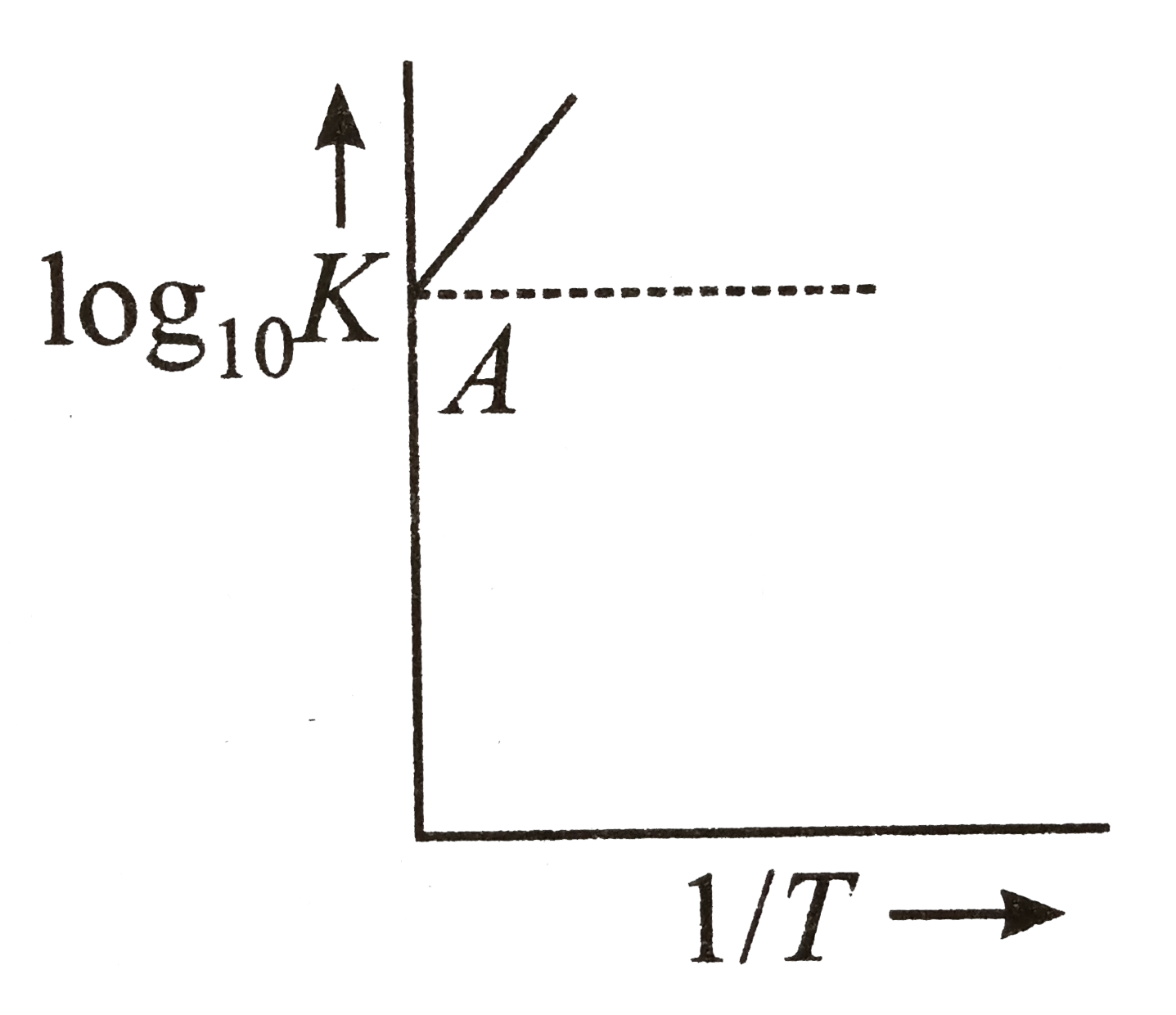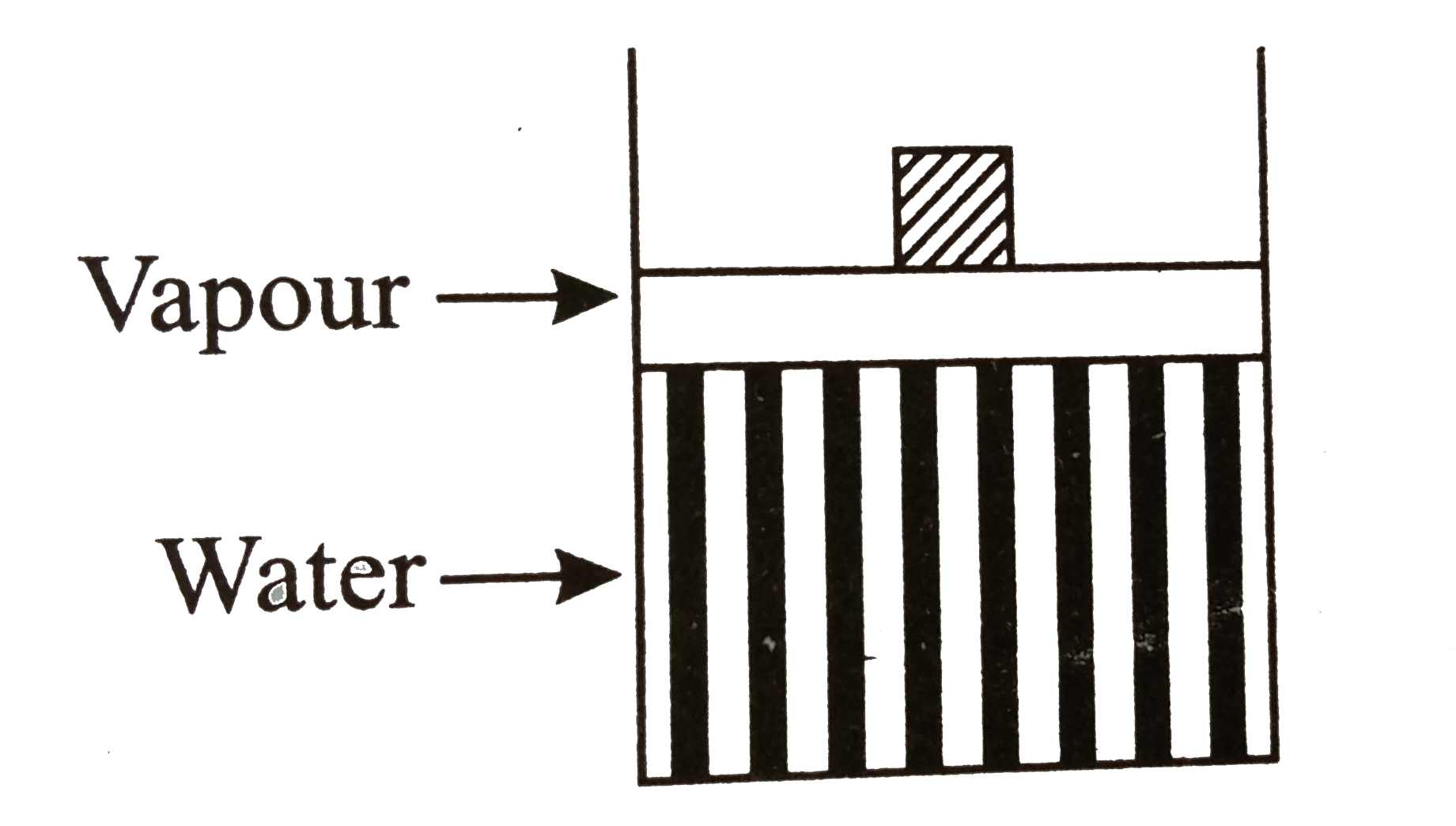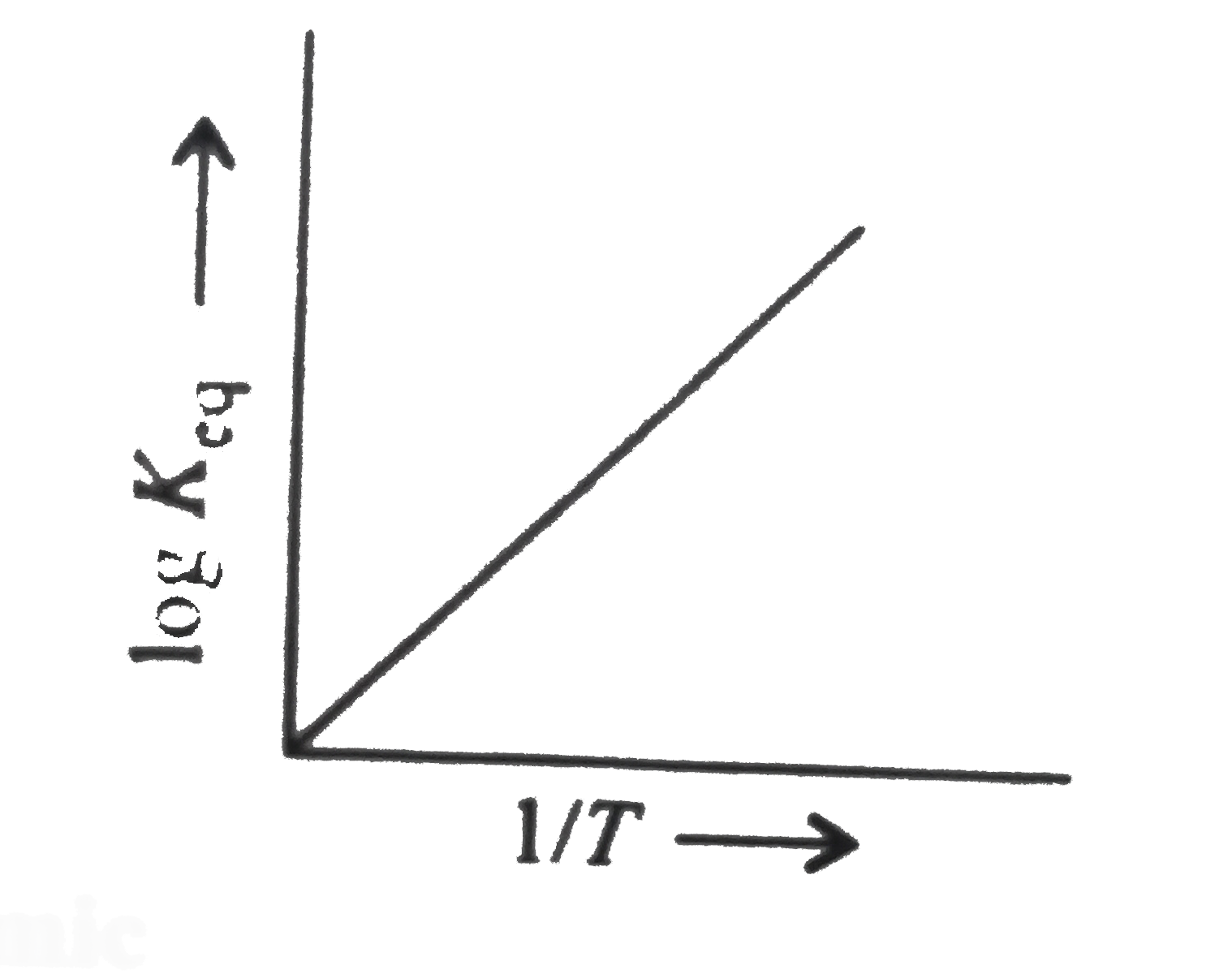Complete Solutions to Le - Chatellers'S Principle of chapter CHEMICAL EQUILIBRIUM of Class 11 book with complete answers and questions
| Class 11 | CHEMISTRY |
| Chapter | CHEMICAL EQUILIBRIUM |
| A2Z | Le - Chatellers'S Principle |
| Number Of Questions | 93 |
| Academic Year | 2023-24 |
For the reaction `H_(2)(g) + I_(2)(g)hArr2HI(g)K_(c) = 66.9` at `350^(@)C` and `K_(c) = 50.0` at `448^(@)C` . The reaction has
View SolutionThe exothermic formation of `C1F_(3)` is represented by the equation `C1_(2(g)) + 3F_(2(g))hArr2C1F_(3(g))` , `Delta H = - 329 kJ` Which of the following will increase the quantity of `C1F_(3)` in an equilibrium mixture of `C1_(2)`, `F_(2)` and `C1F_(3)`
View SolutionIn an equilibrium reaction `H_(2)(g) + I_(2)(g)hArr2HI(g)`
` Delta H = - 3000` calories, Which factor favours dissociation of HI
View SolutionFor the chemical equilibrium,
`CaCO_(3)(s) hArr CaO(s)+CO_(2)(g)`
`Delta_(r)H^(ɵ)` can be determined from which one of the following plots?
View SolutionFormation of `SO_(3)` take place according to the reaction `2SO_(2) + O_(2)hArr2SO_(3)`, `Delta H = - 45.2` kcal Which of the following factors favours the formation of `SO_(3)` ?
View SolutionFor the gas phase reaction
`C_(2)H_(4)+H_(2) hArr C_(2)H_(6)(DeltaH=-32.7 "kcal")`
carried out in a vessel, the equilibrium concentration of `C_(2)H_(4)` can be increased by
View SolutionFor the chemical reaction
`3X(g)+Y(g) hArr X_(3)Y(g)`,
the amount of `X_(3)Y` at equilibrium is affected by
View SolutionIn an equilibrium reaction for which `Delta G^(@) = 0` , the equilibrium constant K =
View SolutionConsider the following reversible reactionat equilibrium:
`2H_(2)O(g) hArr 2H_(2)(g)+O_(2)(g), DeltaH=+24.7 kJ`
Which one of the following changes in conditions will lead to maximum decomposition of `H_(2)O(g)`?
View SolutionIn which of the following system, doubling the volume of the container causes a shift to the right
View SolutionIn a vessel containing `SO_(3), SO_(2)` and `O_(2)` at equilibrium, some helium gas is introduced so that total pressure increases while temperature and volume and volume remain the same. According to Le Chatelier's principle, the dissociation of `SO_(3)`:
View SolutionThe equilibrium `SO_(2)Cl_(2)(g) hArr SO_(2)(g)+Cl_(2)(g)` is attained at `25^(@)C` in a closed container and an inert gas, helium, is introduced. Which of the following statement is`//`are correct?
View Solution`Delta G^(@)(HI, g) ~= + 1.7 kJ`. What is the equilibrium constant at `25^(@)C` for `2HI(g)`hArrH_(2)(g) + I_(2) (g)` ?
View SolutionWhich of the following equilibrium will shift to right side on increasing the temperature ?
View SolutionIn a reaction `A_(2)(g)+4B_(2)(g) hArr 2AB_(4)(g), DeltaH lt 0`. The formation of `AB_(4)` is not favoured by
View SolutionSodium sulphate dissolves in water with evolution of heat. Consider a saturated solution of sodium sulphate. If the temperature is raised, then according to Le-Chatelier principle
View Solution`N_(2) + 3H_(2)hArr2NH_(3)` If temperature of following equilibrium reaction increases, then the reaction
View SolutionConsider the equilibrium
`N_(2)(g) + 3H_(2)(g)hArr2NH_(3)(g)` , `Delta H = - 93.6 kJ` . The maximum yield of ammonia obtained by
View SolutionIn the system `AB_((s))hArrA_((g))+B_((g))` doubling the quantity of `AB_((s))` would:
View Solution`H_(2(g)) + I_(2(g))hArr2HI_((g))`
` Delta H = + q` cal, the formation of HI:
View SolutionThe standard state Gibbs's energy change for the isomerisation reaction `cis-2-pentencehArrtrans-2-pentence` is `-3.67 kJ mol^(-1)` at `400 K`. If more `trans-2-pentence` is added to the reaction vessel, then:
View SolutionIn which of the following equilibrium system the rate of the backward reaction is favoured by increase of pressure
View SolutionThe formation of `SO_(3)` takes place according to the following reaction, `2SO_(2) + O_(2)hArr2SO_(3)` , `Delta H = 45.2` kcal The formation of `SO_(3)` is favoured by
View SolutionWhich of the following equilibrium is not shifted by increase in the pressure ?
View SolutionConsider the heterogeneous equilibrium in a closed container `NH_(4)HS (s)hArrNH_(3) (g) + H_(2)S(g)` If more `NH_(4)Hs` is added to the equilibrium
View SolutionAccording to le-Chatelier's principle, adding heat to a solid and liquid in equilibrium will cause the
View SolutionAccording to le-Chatelier's principle, adding heat to a solid and liquid in equilibrium will cause the
View SolutionOn addition of an inert gas at constant volume to the reaction `N_(2) + 3H_(2)hArr2NH_(3)` at equilibrium
View SolutionIf for `2A_(2)B(g)hArr2A_(2)(g)+B_(2)(g),K_(P)="TOTAL PRESSURE" ("at equilibrium") " then:
View SolutionLe-Chatelier principle is not applicable to
View SolutionWhich of the following is not favourble for `SO_(3)` formation ?
`2SO_(2)(g) + O_(2)(g)hArr2SO_(3) (g)` , `delta H = - 45.0` kcal
View SolutionFor the reaction: `A + B + Q hArr C + D`, if the temperature is increased, then concentration of the products will
View SolutionIn a reversible reaction, the catalyst
View Solution`H_(2(g)) + I_(2(g))hArr2HI_((g))`
In this reaction when pressure increases, the reaction direction
View SolutionWhich of the following factor is shifted the reaction `PC1_(3) + C1_(2)hArr`
`PC1_(5)` at left side ?
View SolutionThe rate of reaction of which of the following is not affected by pressure
View SolutionConsider the reaction
(i) `PC1_(5)(g)hArrPC1_(3)(g) + C1_(2)(g)`
`N_(2)O_(4)(g)hArr2NO_(2)(g)`
The addition of an inert gas at constant volume
View SolutionUnder what conditoin of temperature and pressur the formation of atomic hydrogen from molecular hydrogen will be favoured most ?
View SolutionCalculate `DeltaG^(Theta)` for the conversion of oxygen to ozone, `((3)/(2)) O_(2)(g) hArr O_(3)(g) at 298 K`, of `K_(p)` for this conversion is `2.47 xx 10^(-29)`.
View SolutionThe formation of nitric oxide by contact process `N_(2) + O_(2)hArr. Delta H = 43.200` kcal is favoured by
View SolutionGiven the following reaction at equilibrium `N_(2)(g) + 3H_(2)(g)hArr2NH_(3)(g)`. Some inert gas at constant pressure is added to the system. Predict which of the following facts:
View Solution`N_(2) + O_(2)hArr2NO - Q` cals In the above reaction which is the essential condition for the higher production of NO
View SolutionThe yield of product in the reaction,
`A_(2)(g)+2B(g) hArr C(g)+Q KJ`
would be higher at:
View SolutionA reaction in equilibrium is respresnt by the following equation `2A_((s)) + 3B_((g))hArr3C_((g)) + D_((g)) + O_(2(g))` if the pressure on the system is reduced to half of its original value
View SolutionWhich reaction is not affected by change in pressure ?
View SolutionWhich among the following reactions will be favoured at low pressure?
View SolutionThe gaseous reaction `A + B hArr2C + D, + Q `is most favoured at
View SolutionIn the following reaction `PC1_(5)(g)hArrPC1_(3)(g) + C1_(2)(g)`
at constant temperature, rate of backward reaction is increase by:
View SolutionConsider the reaction equilibrium, `2SO_(2(g)) + O_(2(g))hArr , Delta H^(@) = - 198 kJ` . On the basis of Le-Chatelier's principle, the condition favourable for the forward reaction is
View SolutionReaction `2BaO_(2)(s)hArr2BaO(s) + O_(2)(g), Delta H = +ve`. At equilibrium condition, pressure of `O_(2)` is depended on:
View SolutionWhen pressure is applied to the equilibrium system, `IcehArrWater`. Which of the following phenomenon will happen?
View SolutionOn cooling of following system at equilibrium
`CO_(2)(s)hArrCO_(2)(g)`
View SolutionOn the velocity in a reversible reaction, the correct explanation of the effect of catalyst is.
View SolutionFor an equilibrium `H_(2)O` (s) hArrH_(2)O` (l) which of the following statement is true:
View SolutionAccording to le-Chatelier's principle, adding heat to a solid and liquid in equilibrium will cause the
View SolutionIn a given system, water and ice are in equilibrium. It pressure is applied to the above system then
View SolutionThe reaction `A + B hArr C + D` is studied in a one litre vessel at `250^(@)C` . The initial concentration of A was 3n and that of B was n. When equilibrium was attained, equilibrium concentration of C was found to the equal to the equilibrium concentration of B. What is the concentration of D at equilibrium ?
View SolutionIn the gaseous equilibrium
`A+2B hArr C+"Heat"`, the forward reaction is favoured:
View SolutionAt room temperature, the equilibrium constant for the reaction P + Q `hArr` R + S was calculated to be `4.32` . At `425^(@)C` the equilibrium constant became `1.24xx10^(-2)` . This indicates that the reaction
View SolutionVariation of `log_(10)K` with `(1)/(T)` is shown by the following graph in which straight line is at `45^(@)` , hence `Delta H^(@)` is:

View SolutionFollowing gaseous reaction is undergoing in a vessel `C_(2)H_(4) + H_(2)hArrC_(2)H_(6)` , `Delta H = - 32.7` Kcal
Which will increase the equilibrium concentration of `C_(2)H_(6)` ?
View SolutionPure ammonia is placed in a vessel at a temperature where its dissociation constant `(alpha)` is appreciable. At equilibrium,
View SolutionThe effect of increasing the pressure on the equilibrium `2A + 3BhArr3A + 2B` is
View SolutionFor the reaction, `4NH_(3)(g) + 5O_(2)(g)hArr4NO(g) + 6`
` H_(2)O(l)`, `Delta H =` positive. At equilibrium the factor that will not affect the concentration of `NH_(3)` is:
View SolutionAn endothermic reaction is represented by the graph :
View SolutionFor the equilibrium `2NO_(2)(g)hArrN_(2)O_(4)(g) + 14.6` Kcal the increase in temperature would
View SolutionThe value of `Delta G^(@)` for a reaction in aqueous phase having `K_(c) =1`, would be:
View SolutionWhich of the following factors will favour the reverse reaction in a chemical equilibrium?
View SolutionThe correct relationship between free energy change in a reaction and the corresponding equilibrium constant `K_(c)` is:
View SolutionIn the formation of `SO_(3)` by contact process, the conditions used are
View SolutionFor the reaction
`CO(g)+H_(2)O(g) hArr CO_(2)(g)+H_(2)(g)`
at a given temperature, the equilibrium amount of `CO_(2)(g)` can be increased by
View SolutionGiven reaction is `2X_((gas)) + Y_((gas))hArr2Z_((gas)) + 80` Kcal
Which combination of pressure and temperature gives the highest yield of Z at equilibrium ?
View SolutionGiven the following reaction at equilibrium `N_(2)(g) + 3H_(2)(g)hArr2NH_(3)(g)`. Some inert gas at constant pressure is added to the system. Predict which of the following facts:
View SolutionConsider the reaction `HCN_((aq))hArrH_((aq))^(+) + CN_((aq))^(-)` . At equilibrium, the addition of `CN_((aq))^(-)` would
View SolutionAddition of water to which of the following equilibria causes it to shift in the backward direction ?
View SolutionIn the gaseous equilibrium `H_(2)X_(2)` + heat `hArr` 2HX, the formation of HX will be favoured by
View SolutionThe equilibrium constants for the reaction `Br_(2)hArr 2Br`
at 500 K and 700 K are `1xx10^(-10)` and `1xx10^(-5)` respectively. The reaction is:
View SolutionReasing the temperature of an equilibrium system
View SolutionSome quantity of water is contained in a container as shown in figure. As neon is added to this system at constant pressure, the amount of liquid water in the vessel

View SolutionWhen a bottle of cold drink is opened, the gas comes out with a fizzle due to:
View SolutionReaction in which yield of product will increase with increase in pressure is
View SolutionIn the reaction `A_(2)(g) + 4B_(2)(g)hArr2AB_(4)(g)`, `Delta H lt 0` . The decomposition of `AB_(4)` (g) will be favoured at
View SolutionThe endothermic reaction `(M+NhArrP)`is allowed to attain an equilibrium at `25^(@)` . Formation of P can be increased by
View SolutionThe equilibrium constant for a reacton
`N_(2)(g)+O_(2)(g)=2NO(g)` is `4xx10^(-4)` at `2000 K`. In the presence of catalyst, the equilibrium constant is attained `10` times faster. The equilibrium constant in the presence of catalyst, at `2000 K` is
View SolutionAccording to Le-Chatelier's principle, an increase in the temperature of the following reaction will
`N_(2) + O_(2)hArr2NO, -43,200` Kcal
View SolutionIn which of the following equilibrium, change in the volume of the system does not alter the number of moles?
View SolutionIn which of the following reactions, increase in the pressure at temperature does not affect the moles at equilibrium:
View SolutionSuppose the reaction `PC1_(5(s))hArrPC1_(3(s)) + C1_(2(g))` is in a closed vessel at equilibrium stage. What is the effect on equilibrium concentration of `C1_(2(g))` by adding `PC1_(5)` at constant temperqture ?
View SolutionConsider the reaction equilibrium, `2SO_(2(g)) + O_(2(g))hArr , Delta H^(@) = - 198 kJ` . On the basis of Le-Chatelier's principle, the condition favourable for the forward reaction is
View SolutionIn which of the following equilibrium reactions, the equilibrium reactions, the equilibrium would shift to the right, if total pressure is increased
View SolutionThe exothermic formation of `C1F_(3)` is represented by the equation `C1_(2(g)) + 3F_(2(g))hArr2C1F_(3(g))` , `Delta H = - 329 kJ` Which of the following will increase the quantity of `C1F_(3)` in an equilibrium mixture of `C1_(2)`, `F_(2)` and `C1F_(3)`
View SolutionIn which of the following gaseous equilibrium an increase in pressure will increase the yield of the products
View SolutionA schematic plot of log `K_(eq)` vs inverse of temperature for a reaction is shown in the figure. The reaction must be:

View Solution
Le - Chatellers'S Principle questions and complete solutions for chapter CHEMICAL EQUILIBRIUM of A2Z CHEMISTRY (HINGLISH) of Class 11
All Exercises from A2Z Class 11 CHEMISTRY CHEMICAL EQUILIBRIUM
- AIIMS Questions
- Application Of Equllibrium Constant (K)
- Assertion - Reasoning Questions
- Calculation Of Equilibrium Constant
- Degree Of Dissociation, Vapour Density And Simultaneous Equilibria
- Equilibrium Constant - K_P And K_C
- Le - Chatellers'S Principle
- NEET/AIPMT Questions
- Section B - Assertion Reasoning
- Section D - Chapter End Test